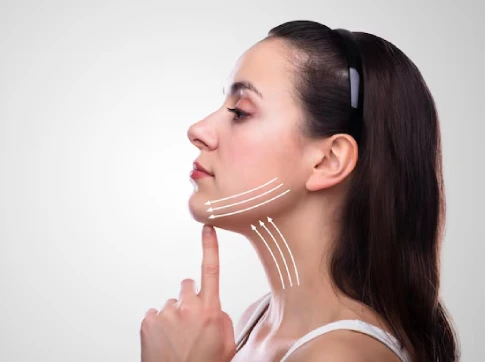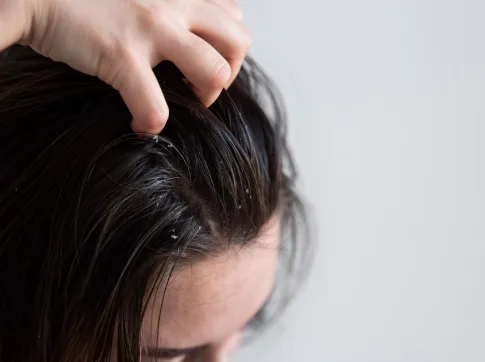Everything You Need to Know About Chemical Peels - Treatments, Procedure, Types , and Benefits.
26 Dec 2023 Posted By Skinlogics
Chemical peels are not a novel concept. It is one of the oldest procedures for making the skin look healthy and youthful. These are often performed by applying a medical-grade acidic solution to the skin to remove dull and damaged skin layers. As a result, the skin surface appears smoother, younger, and more regenerated.
If one is interested in chemical peel treatment in Noida and wants to get a rejuvenated, even-toned, blemishes-free, healthy skin glow one can get this treatment at Skinlogics Clinic, the top dermatology clinic in Delhi/NCR.
Also with this guide, one can learn more about chemical peels and their benefits. Read on to learn more about chemical peel treatment in Noida with the expert insights shared by dermatologists at Skinlogics Clinic.
What are the Types of Chemical Peels?
Chemical peels are classified into several types, such as:
Light chemical peel
Light chemical peels are a gentle therapeutic option. They require little to no downtime and are expected to result in minimal peeling or discomfort. This type of procedure may deal with minor issues, such as the following:
- Acne
- Enlarged pores
- Minor pigmentation problems
Low concentrations of glycolic, lactic, or salicylic acid are common chemicals used in light chemical peels. The most effective chemical peel is one that is mild and exfoliates dead skin cells on the skin's surface.
The outer skin surface is composed of dead cells and cellular debris. This substance can accumulate on the face's outer surface and hinder its natural radiance. During the chemical peel treatment, a combination of two or three chemicals may be used to address multiple issues at once. Salicylic and glycolic acids, for example, can be used to brighten the skin and make the pores appear smaller.
Despite the fact that there is no downtime associated with this type of light procedure, patients should still use outside protection because the outer layer is removed during the application. Extremely delicate peels may not require any post-procedure peeling.
People who use this gentle peel on a regular basis have the best benefits. However, the type of problem that a person wants to treat with peels is typically a deciding factor and requires consultation with a dermatologist in Noida to determine what is good for an individual concern.
Medium Peel
The most popular chemical in medium peels is trichloroacetic acid (TCA). This treatment is advised for sun-damaged skin with fine lines and wrinkles, as well as enlarged pores. To brighten the skin, it can be combined with a glycolic acid formulation.
Swelling, redness, and peeling are common after a medium peel treatment provided by clinic specialists.
Since medium chemical peels penetrate the skin more deeply, they must be thoroughly examined before being used. Because of the potential for hyperpigmentation and irritation, they are not normally suggested for all skin tones. Patients may require topical anaesthesia or pain medication before having this type of procedure performed at the clinic.
Deep Peel
To improve the overall appearance of the face, this peel uses high-strength TCA or phenol. It's used to treat the following problems:
- Wrinkles and deep creases
- Significant sun damage
- Skin sagging
- Scars
- Age spots.
Deep chemical peels are only recommended for patients with serious skin issues. After leaving the facility, patients will experience significant skin peeling, redness, and discomfort. The best results may take up to six weeks to achieve.
Following the deep chemical peel skin treatment, the skin will be covered in ointment for many weeks. Because the skin is so delicate at this time, a moisturiser is required. Avoid sun exposure while recovering. To measure progress, patients will need to see specialists during follow-up appointments.
The Procedure of Chemical Peel
Although some aspects of a peel treatment differ based on the type, there are several basic factors to consider before getting a peel treatment. The following steps are involved in chemical peels:
- The chemical peel treatments must be performed at a doctor's office or surgical facility.
- During the initial consultation, a physical assessment will be performed to identify the ideal chemical peel as well as the cost.
- If a person undergoes a deep treatment, a sedative may be administered to help them relax.
- Practitioners will clean the face thoroughly and, if necessary, provide topical anaesthesia to the treatment area.
Following the application of topical anaesthesia to the treatment area, the following procedures will be carried out:
- A clinic practitioner will apply a chemical solution that has been specifically tailored to a person's needs.
- Patients may experience tingling or stinging after undergoing treatment with chemical peels.
- The peel solution will be applied to the face for a specific amount of time, depending on the treatment. After that, the solution will be rinsed with water.
- Since the patient's face has had its outermost layer removed, the treatment region normally serves as a protective barrier and will get a rich moisturising application. Patients are going to get information on how to take care of their faces after the procedure.
If one is looking for a chemical peel for hyperpigmentation and dark spots, then get in touch with the chemical peel dermatologist near me. One must always get in touch with experts and experienced professionals to obtain the best outcomes as the treatment uses peels that are prescribed only by a skin doctor after a thorough assessment of one’s skin.
Benefits of Chemical Peel Treatment for Skin Rejuvenation
- Smoother skin with fewer wrinkles and fine lines
Wrinkles and fine lines appear as our skin loses collagen over time. With thinning skin, people may notice wrinkles on sensitive areas of the face, particularly around the eyes and forehead. Prolonged sun exposure, inadequate diets, and unhealthy lifestyle choices can all contribute to the formation of wrinkles and lines on the face. If one wants to reverse or minimise the signs of sun damage and skin ageing, chemical peels are a safe and simple alternative. Regular peels can help reduce wrinkles and fine lines all over the face, making them ideal for rejuvenating the appearance.
- A more even and radiant skin tone
Chemical skin resurfacing treatment in Noida can help minimise hyperpigmentation and even out skin tone. Regular peel treatments can help people if they have age spots, sun spots, or sun damage. A peel treatment's chemicals can help lighten the complexion and improve its appearance.
Acne, scars, freckles, melasma, and other skin imperfections will appreciate how resurfacing treatments can improve and lighten their overall appearance. The ultimate effect is a healthier, more even skin tone that gives people confidence.
- Acne breakouts reduced
Regular peels may help reduce breakouts and keep the skin free of inflammation. When the pores become clogged as a result of dead skin cell buildup, one may be more prone to breakouts. Exfoliating the uppermost layer of the skin to prevent clogged pores is thus one of the most effective ways to prevent acne.
Peel treatments use acid solutions to clear pores, regulate sebum production, and destroy acne-causing bacteria. As a result, peel treatments can not only reduce acne scars and hyperpigmentation, but they can also address the fundamental cause of skin problems and prevent outbreaks in the first place.
People living in Noida suffer from skin damage and premature ageing signs due to pollution and hectic lifestyle. If they are looking for chemical peel treatment near me they can get in touch with the Skinlogics Clinic to get the treatment that can help them to revive their skin and achieve a youthful look. Do visit the clinic to learn more about this amazing treatment benefits!
Also Read: Reasons for Hair Loss In Women: Medical Reasons And More



